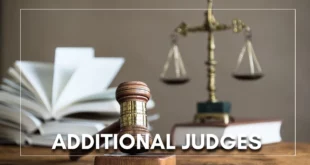- When BilkisBano, sole survivor of a horrific gang-rape and mass murder in 2002, asked the Supreme Court of India to review its May 2022 judgment which directed the Government of Gujarat to consider the early release of one of those convicted of these monstrous crimes,
- it was an opportunity for the Court to redress an egregious error. Sadly, it chose not to do so. In a bland, two-page order issued in the chambers on December 13, 2022, the Court dismissed her review petition.
- In May this year the Court allowed a writ petition filed by RadheshyamBhagwandas Shah, alias Lala Vakil, who had been convicted by a Sessions Court in Mumbai for mass murder coupled with rape, and sentenced to life imprisonment.
- The conviction and sentence of Radheshyam and his co-convicts were confirmed by a Division Bench of the Bombay High Court on May 5, 2017, and this judgment in turn was confirmed by the Supreme Court on July 10, 2017.
- By its judgment of May 13, 2022 the top court allowed Radheshyam’s writ petition, set aside an Order of the Gujarat High Court which had rejected the same relief sought by the convicted prisoner in that court, and directed the Government of Gujarat to consider the prisoner’s application for remission and premature release in accordance with a now-defunct policy dated July 9, 1992.
- The Gujarat government acted with alacrity in granting remission and early release not only to Radheshyam but also to all his fellow life-convicts.
- It was only when they were released on Independence Day this year, and felicitated with garlands and the distribution of sweets, that the nation awoke to the Supreme Court order which had made this possible. BilkisBano thus applied for a review of the Supreme Court’s judgment.
- In addition, since she had neither been given notice nor been heard in Radheshyam’s petition, she requested an open court hearing in accordance with Order 47, Rule 3 of the Supreme Court Rules.
- The order of December 13 rejected her application for a hearing and dismissed the Review Petition by circulation in chambers.
- The said order is perplexing as it completely fails to notice or engage with several of the review petitioner’s contentions.
- Worse, the only submission of the review petitioner which was noted, namely that four binding judgments including one by a Constitution Bench had not been followed by the Court, was brushed aside with the statement that “none of the judgments are of any assistance to the review petitioner”.
Aspects that were overlooked
- Some aspects revealed in the Review Petition which were completely overlooked by the Court include:
- writ petitions under Article 32 of the Constitution are not maintainable against judicial orders, especially orders of a High Court, which is a constitutional court like the Supreme Court; Radheshyam had filed a writ petition before the Gujarat High Court which was rejected by a judgment of July 17, 2019, referred to by the top court as “the judgment impugned”
- hence his only remedy was to file a petition seeking special leave to appeal under Article 136; after the High Court rejected his petition on July 17, Radheshyam moved an amendment application to contend that the appropriate government to consider remission or early release was the central government, and the High Court rejected this too by its order dated March 13, 2020,
- which records that his counsel accepted the correct legal position and sought permission to move the Bombay High Court, which liberty was granted to him; the convicted prisoner had suppressed all relevant facts and materials in his writ petition before the top court; the foundation of the Supreme Court’s judgment dated May 13, 2022 was its finding that the State of Gujarat was the appropriate government and not the State of Maharashtra, which finding is rendered without considering the plain words of sub-sections (1) and (7) of Section 432 of the Code of Criminal Procedure;
- that these and other relevant provisions of law had been consistently interpreted by the Supreme Court for over four decades, hence a two-judge Bench of the top court could not have adopted a contrary interpretation without referring the issue to a larger Bench;
- and the Supreme Court had relied heavily on a Bombay High Court order of August 5, 2013, which did not even remotely hold what the Court ascribed to it in paragraphs 5 and 12 of the judgment under review.
Other instances
- Strangely, the top court ignored a binding nine-judge Constitution Bench decision in Naresh Shridhar Mirajkar (1966) and another five-judge Constitution Bench in Triveniben (1989), which held that a judgment of a court can never be challenged in a writ petition under Article 32.
- The Court also brushed aside another Constitution Bench decision in Union of India vs V. Sriharan (judgment in 2015) in which the majority in paragraph 180, and the minority concurring on this aspect in paragraph 212, held that if an offence is committed in State A, but the trial takes place and sentence is passed in State B, it is the government of the latter alone which is the appropriate government.
SOURCE: THE HINDU, THE ECONOMIC TIMES, PIB
 Chinmaya IAS Academy – Current Affairs Chinmaya IAS Academy – Current Affairs
Chinmaya IAS Academy – Current Affairs Chinmaya IAS Academy – Current Affairs



